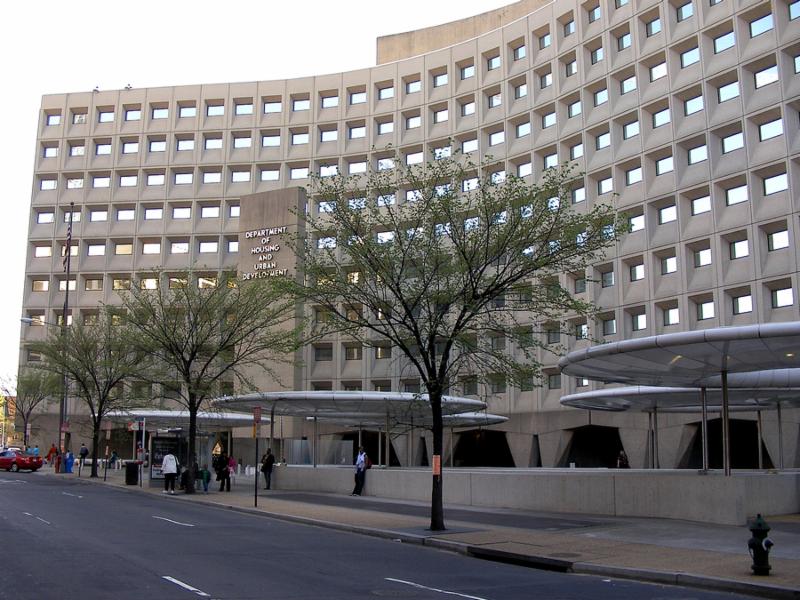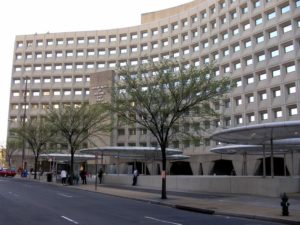
 Housing stakeholders nationwide were alarmed by President Trump’s proposed budget cut of $6.2 billion for the Department of Housing and Urban Development (HUD). Such deep cuts would prevent meaningful investment in the future while endangering much existing affordable housing supported by Housing Choice Vouchers, public housing, Section 8, HOME and CDBG block grants and other well-known housing programs. But the proposed budget would also cut many other, lesser-known programs with proven success in creating economic opportunity, drawing in private investment and reaching people and communities often left behind in times of prosperity.
Housing stakeholders nationwide were alarmed by President Trump’s proposed budget cut of $6.2 billion for the Department of Housing and Urban Development (HUD). Such deep cuts would prevent meaningful investment in the future while endangering much existing affordable housing supported by Housing Choice Vouchers, public housing, Section 8, HOME and CDBG block grants and other well-known housing programs. But the proposed budget would also cut many other, lesser-known programs with proven success in creating economic opportunity, drawing in private investment and reaching people and communities often left behind in times of prosperity.
When affordable housing is mentioned, most people’s minds jump right to HUD. But affordable housing support has a place in several agencies, many of which the president’s budget targets for elimination. Here are a few successful housing programs you may not have heard about, each targeted for cuts or elimination:
· U.S. Department of Agriculture Rural Housing Service creates and preserves affordable housing in rural America, but the budget proposes cutting the state office staff who implements this work.
· Appalachian Regional Commission (ARC) focuses on regional economic development, with natural connections to housing, in a region that has struggled with declining employment and population for years. Congress established the ARC in 1965.
· Community Development Financial Institutions Fund (CDFI Fund) capitalizes mission-driven lenders who leverage private capital for community development and affordable housing. The CDFI Fund is part of the Department of the Treasury.
· Neighborworks® America, aka Neighborhood Reinvestment Corporation, empowers a network of locally based nonprofits who strengthen communities through affordable housing and community development work. It is a nonprofit chartered by Congress in 1978.
· Capacity Building for Community Development and Affordable Housing Program (Section 4) is in HUD; Congress authorized it in 1993 to help nonprofits build their capacity for affordable housing and community development work. It currently goes to Enterprise Community Partners, Habitat for Humanity International and the Local Initiatives Support Corporation.
· Self-help Homeownership Opportunity Program (SHOP) is another little-known HUD program. Nonprofits use SHOP funds, authorized by Congress in 1996, to create affordable homeownership using sweat equity from the new homeowners themselves. The Housing Assistance Council has one example among many SHOP programs.
· Weatherization Assistance Program is in the Department of Energy, and it does just what it sounds like. Federal funds go through states and localities to help make homes more energy efficient, which saves money, keeps families healthier and sustains homeownership for low-income households.
· Hazard Mitigation Grant Program in the Department of Homeland Security (via FEMA) helps communities mitigate the risks of natural disasters by making homes and other buildings more resilient. It turns out that preventing damage from hazards like floods is also a great way to save money.
· United States Interagency Council on Homelessness (USICH) coordinates the efforts of 19 federal agencies to end and prevent homelessness. USICH is an “independent establishment” within the executive branch that was originally authorized by Congress in the 1987 Stewart B. McKinney Homeless Assistance Act. Lawmakers recently introduced bipartisan legislation to make USICH permanent.
· The Transportation Investment Generating Economic Recovery (TIGER) program is a competitive program that supports innovative transportation projects, including multi-modal and multi-jurisdictional projects, which are difficult to fund through traditional programs. The Capital Investment Grants program is the only federal program dedicated to supporting new public transportation lines. Both of these Department of Transportation programs affect the creation and preservation of affordable housing near the transportation investments.
What these examples of effective housing programs targeted for cuts have in common is that they are long-term investments in America’s people and communities. They are in many different agencies because housing connects to many different parts of our lives: our health, our economic future, our connections to our neighbors and more.
As we discussed last week at NHC’s Annual Budget Forum, our advocacy for housing funding should build on the intersections between housing and the values each of us hold dear. If you missed the live broadcast, I encourage you to view the recording for ideas and strategies that can strengthen the message of support for affordable housing.

